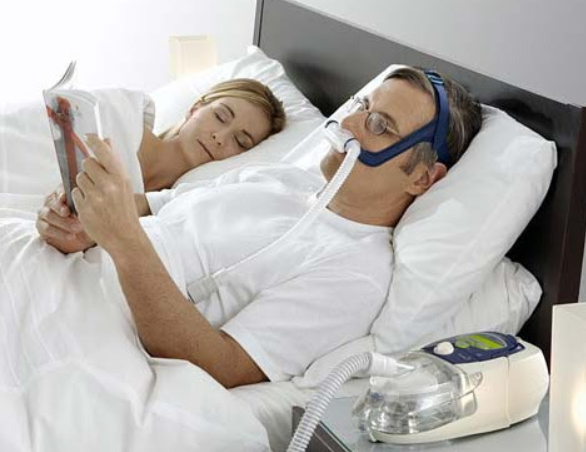

People are not considerate when their other half tells them about their snoring while sleeping. Many people with sleep apnea go undiagnosed with severe sleep apnea until their situation worsens.
Every 1 in 15 people in the United States has sleep apnea; there are 18 million sleep disorder cases in America alone. Globally there are up to 1 billion cases of sleep disorders. China is on top according to 2012 diagnostics, followed by the USA, Brazil and India.
Treating sleep apnea is crucial as it has the potential to decrease the life expectancy of humans. This blog will give you insight into sleep apnea statistics around the globe.
It could be life-threatening if your breathing stops and starts while sleeping, and it's gone untreated for a long period of time. There are three different types of sleep apnea, obstructive sleep apnea, central sleep apnea and treatment-emergent sleep apnea.
Due to overlapping symptoms of moderate obstructive sleep apnea and central sleep apnea, it is sometimes difficult to determine which one it is. Obstructive sleep apnea is considered as mild sleep apnea, whereas central sleep apnea is moderate to severe. Here are some symptoms of obstructive sleep apnea.
Other than the symptoms of sleep apnea mentioned above, family history also plays a vital role in developing sleep apnea as it could be genetic too.
According to researchers, sleep apnea is one of the most common disorders worldwide, adding up to as many as 1 billion worldwide. This includes all gender, age and race. About 30 million people suffer from sleep apnea; up to 30% of Americans have some symptoms.
OSA is the most common type, as 26% of Americans between the ages of 30 and 70 have it. About 80% with sleep disorders haven't been diagnosed yet. Men under the age of 50 are 2 to 3 times more likely to have sleep apnea than women. Women after 50 have the same chances as men of having sleep apnea.
1% to 10% of children are affected by sleep apnea. 35% of people saw better results after using the CPAP machine. There are still many cases of unregistered untreated sleep apnea.
Central sleep apnea is caused by how your breathing is controlled by the brain when you are asleep. On the other hand, obstructive sleep apnea is caused when your air pathway to the lungs is blocked by over-relaxed muscles like the tongue, tonsils, uvula, etc.
The risk of sleep apnea increases as you get older; fatty tissue can build up in the neck and tongue, which increases the risk of sleep apnea. For people over 30, the disorder is about 3 times more common in men than women.
Some people have a high level of insulin or a low level of thyroid hormones which can increase the chance of sleep apnea.
Smoking increases the inflammation in the mouth and throat, whereas drinking relaxes the muscle, both of which can cause sleep apnea. OSA is 1.2 times more common in smokers than in non or ex-smokers.
Having high-fat deposits around the neck can block air passage. 60%-90% of people having OSA are overweight. And almost 50% of those whose BMI is greater than 50.
3% to 30% of all road accidents are caused by sleepiness while driving, not all may have sleep apnea, but they have a variety of sleep conditions. A sleep disorder can increase the risk of road accidents by up to 300%. Research shows that 4.3% of all road accidents are attributed to obstructive sleep apnea.
CPAP (Continuous positive airway pressure) is a breathing device that is most commonly used to treat severe obstructive sleep apnea. It provides mild to required air pressure to keep the air passage open so you can have uninterrupted breathing while sleeping. There are different types of CPAP machines for different types of sleep apnea.
Undiagnosed sleep apnea, for a long period of time, can result in a risk of other long-term diseases such as cardiovascular disease, hypertension, stroke and coronary heart disease. Cardiac arrhythmias are more common in people with sleep disorders than in regular people. Thus, it's crucial to diagnose sleep apnea in time to have a quality life.
The first line of treatment for moderate sleep apnea is CPAP therapy. If you are not responding well to the CPAP machine for your treatment, use acetazolamide to stimulate your breathing while you sleep and to treat sleep apnea. However, make sure that your sleep specialist prescribes the medicines you take.
Sleep apnea in children is different from adults; their causes and effects are different too. In adults, it happens mainly because of obesity, while in children, it's because of large adenoids and tonsils. In adults, sleep disorders can cause daytime sleepiness and loss of concentration in adults, while children can have behavioural problems. Early diagnosis and treatment of sleep apnea in children are necessary to prevent child growth, cognitive ability and behaviour.
Sleep disorders can be fatal if left untreated for a long period of time. Early diagnosis and treatment are beneficial as they prevent other diseases from developing and take less time to cure. Mild obstructive sleep apnea is manageable with CPAP therapy and by improving the sleep environment.
Leave a comment